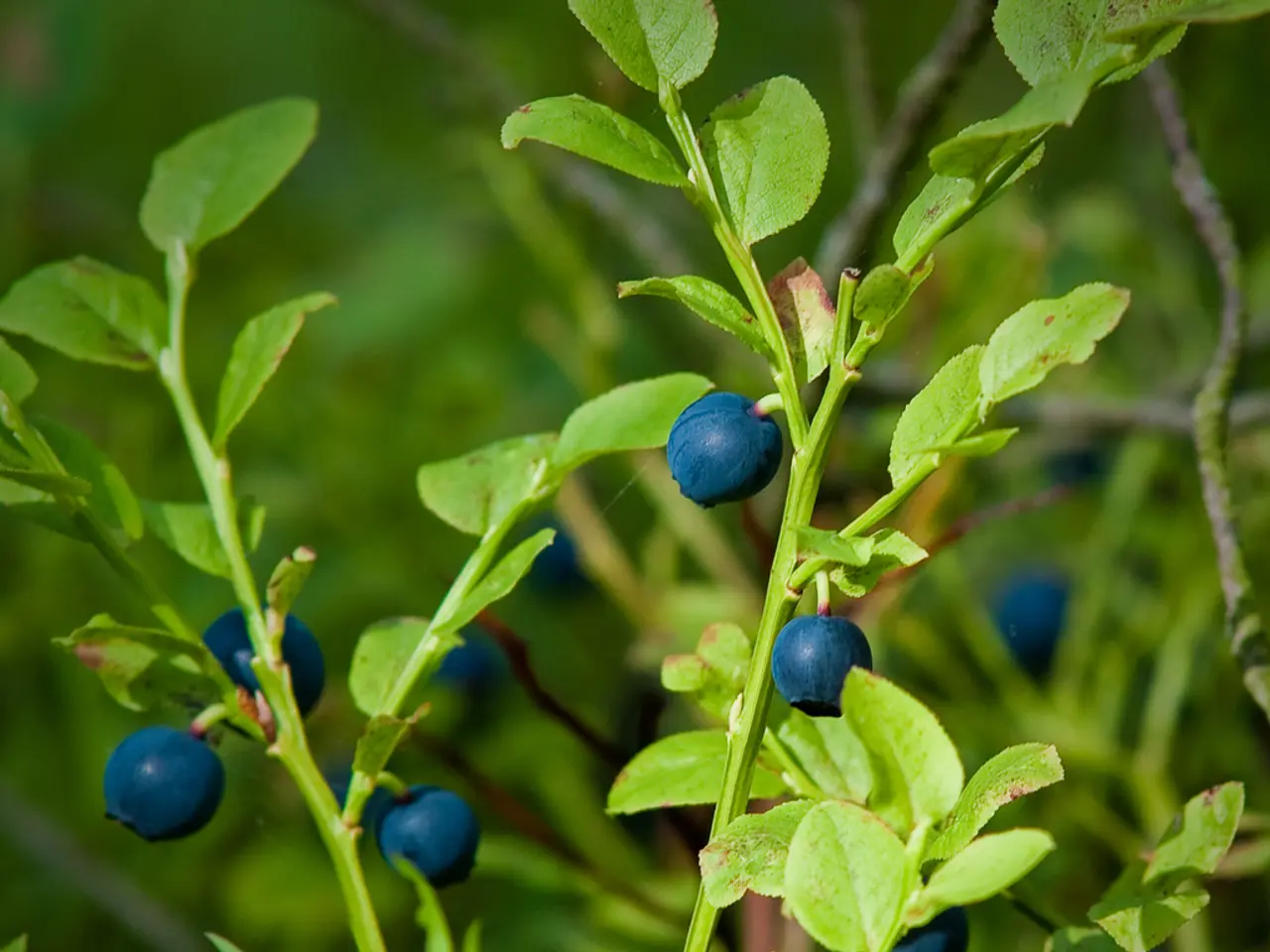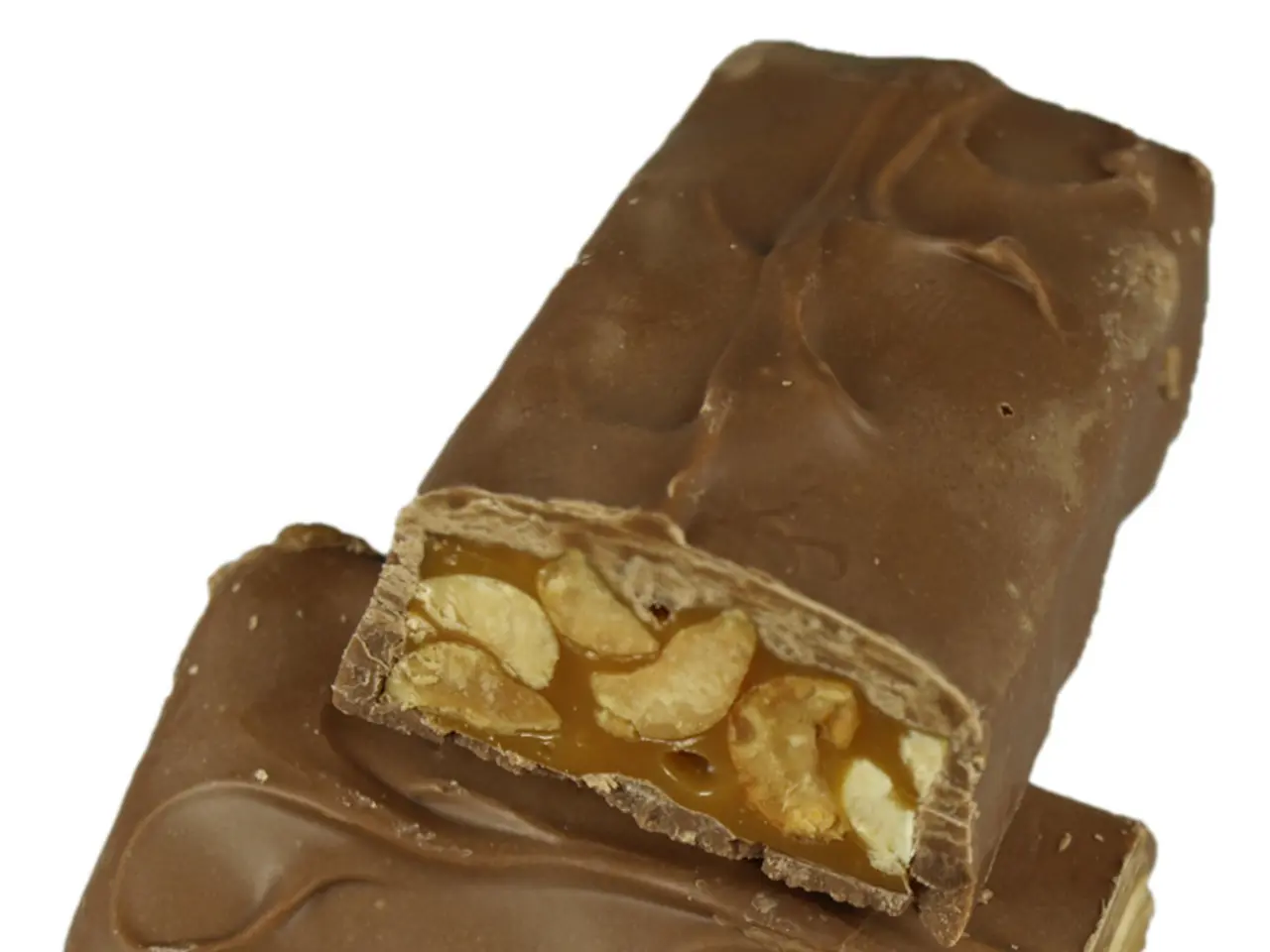Guidanceon Cultivating Loganberries: A Comprehensive Guide
Loganberries, a delightful hybrid of raspberries and blackberries, are a must-have for any home gardener seeking a unique and flavourful fruit. Named after James Harvey Logan, an amateur breeder from California, these large, cone-shaped dark red berries offer a tart, rich flavour that is perfect for jams, puddings, and freezing.
Loganberries thrive in a sunny site with well-drained soil and require watering during their first growing season, especially in dry weather. These large, vigorous plants need plenty of space for growth and should be trained against a fence or wall, or on a post and wire system.
When it comes to planting, loganberries are usually planted as bare root plants between November and March. To ensure a bountiful harvest, they should be pruned annually, with older canes being cut out after they have fruited in late summer or autumn, leaving new cane for the following year.
One of the most popular thornless loganberry varieties for home gardening is the Loganberry LY654. Known for its large, richly flavoured berries with a fresh taste and texture, established plants can produce up to 11 lbs (5 kg) of fruit. This variety typically crops from mid-July and is excellent for jams, puddings, and freezing, making it a great choice for home gardeners seeking flavourful berries without thorns.
While not strictly loganberries, there are also several thornless blackberry varieties worth considering for home gardens that share some similar growing conditions and fruiting characteristics. The Triple Crown Blackberry, for example, is highly regarded for flavour, productivity, and vigour. It produces large, firm, and flavourful berries, yielding up to 30 lbs per vine.
Another thornless blackberry variety to consider is the Prime Ark Freedom® Blackberry, which bears large fruit with good flavour. This variety is the first thornless primocane blackberry from the University of Arkansas, fruit ripens early in July, has an upright growth habit (may require some support), and is suitable for USDA zones 5-9.
For those interested in thornless hybrid berries, the Boysenberry, a hybrid involving blackberry, raspberry, and loganberry parentage, is a flavourful alternative. It is self-pollinating, with extra-large, sweet, firm purple fruit ripening in late July, suitable for zones 6-9.
In conclusion, for a home garden focused on thornless loganberries specifically, the Loganberry LY654 is a highly recommended choice based on flavour, productivity, and ease of growth. For related thornless bramble fruits with similar growing needs, the Triple Crown and Prime Ark Freedom® thornless blackberries are excellent additions. Supporting the canes with trellises or plant supports is advisable to maintain plant health and ease harvesting for these vigorous bramble varieties. Happy gardening!
Logannedberries, particularly the popular thornless variety Loganberry LY654, are ideal for those looking to incorporate home-and-gardening projects into a lifestyle that includes bountiful yields of flavorful fruit. To complement a loganberry garden, other thornless blackberry varieties like the Triple Crown and Prime Ark Freedom® can share similar growing conditions and offer a diverse assortment of fruit for preserves or enjoyment.




